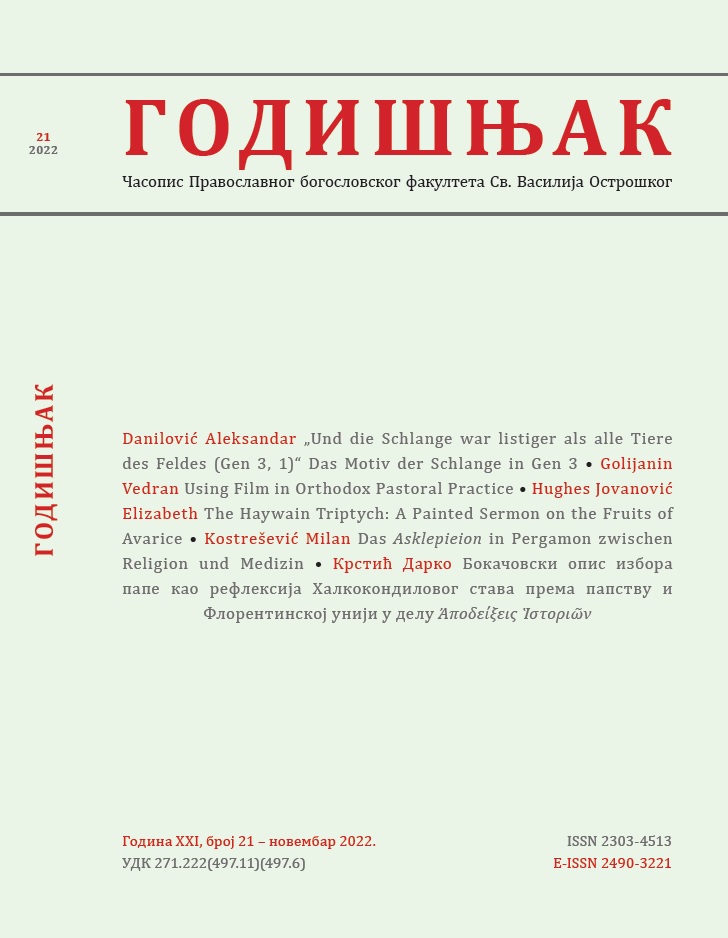The Haywain Triptych: A Painted Sermon on the Fruits of Avarice
DOI:
https://doi.org/10.7251/CPBFSVO2221036Abstract
The Haywain Triptych is a set of three painted oil on oak panels that contain a complete frontispiece on the exterior and a three-part composition on the interior. It dates to approximately 1510–1516. It was painted by Hieronymus Bosch as a visual ser- mon that discusses the various evils that arise from avarice, most notably violence and aggression. The imagery that is used is drawn from several theological sources. Bosch uses motifs mostly inspired by the Modern Devotion movement and popular theological literature of his time, including the Vulgate translation of the Bible, Augustine, Aquinas, à Kempis, Chrysostom, and Bernard of Clairvaux. The most significant image used is the allegory of hay as a representation of temporal wealth, which is a motif sourced from the Dutch translation of the Vulgate and the popular literary imagery of Bosch’s time. The triptych is a judgment scene that follows original sin, the situation of fallen humanity with regard to avarice, and the ultimate result of sin through death. It also contains a message of entreaty to put aside the sins that come from worldly riches and to follow the righteous path through poverty toward Christ.

